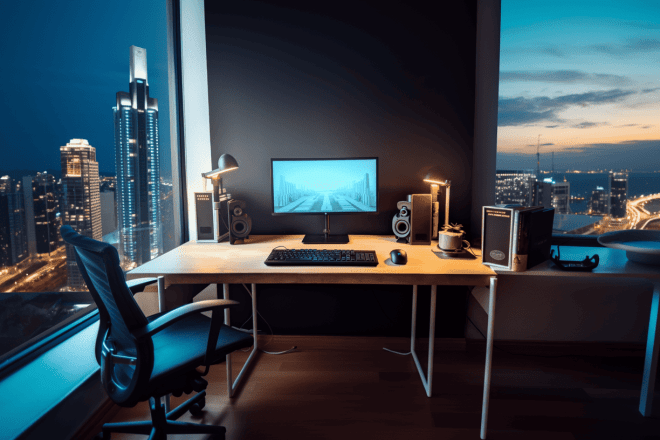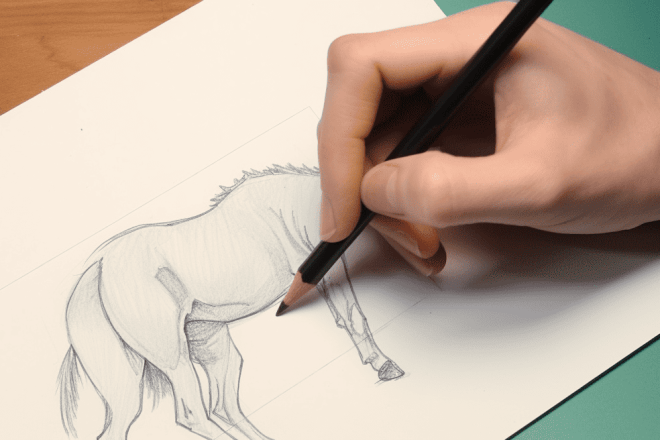With the flow of brush strokes and rich textures, watercolor techniques are the most distinct in the world of art. Many beginners start with watercolor painting because of how versatile and easy it is to create. Meanwhile, luminous watercolors give you the ability to express your style, which is what makes it so unique. When working with digital watercolors, you can achieve the look and aesthetic of traditional watercolor paintings with more precision and control.
Benefits and Challenges of Digital Watercolors
Digital watercolor painting can add flexibility whether you’re a professional artist or just starting. For instance, creating an illustration with watercolor on paper is time-consuming and challenging to edit. In contrast, digital watercolor painting makes it easier to revise with the tap of a new setting.
Before you start your digital painting, it’s critical to formalize your color palette first. Many beginners tend to oversaturate their art with too many colors. With traditional watercolor, it’s easy to overmix and blend too many colors. However, digital watercolor allows you to edit your hues, so you’re not stuck with the option of starting over.
1. Using Different Brushstrokes
Creating a natural brush stroke is essential in digital watercolor painting. You may not always be able to make one final brush stroke so easily. However, you can work for it to create the texture you’re looking to accomplish. Try to experiment with layering different brush strokes. Then, you can go over your lines several times with your erasing tool.
The way brush strokes are applied can be useful to add character and personality. Watercolor has different types of brushes that you can use for different situations. First, you must decide what your image will be, then use the proper brush to achieve the desired effect.
Say you desire a splatter effect. The Wet Splatter watercolor brush stroke will make your colors flourish and allow it to spread across the image.
Vector Brush Strokes
One of the benefits you have with digital watercolor is the ability to create brush stroke vectors. You can use vector brush strokes by scaling them to any size. So, if you work with images you need to scale for different uses, this technique makes excellent use.
You can use the Basic Chisel setting for images with landscapes. Or you can use pixel brushes to adjust to your needs.
Broad Brush Strokes
Consider the fact that different brushes have different properties. So, choose the best match before you start painting. If you’d like to sketch something before painting, use the Sketching pixel brush to lay the foundation of the image beforehand. Then you can finalize it with a watercolor brush to add detail.
This watercolor tutorial will show you several techniques you can add with brush strokes to achieve different effects.
Check out this drawing tablet to help you achieve these watercolor techniques and skills!
2. Embracing Texture
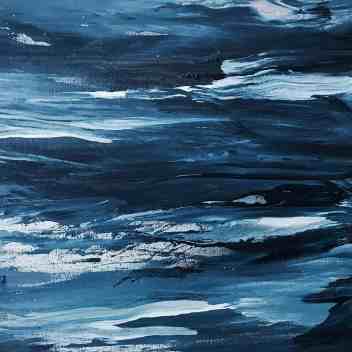
In the past, artists had to replicate the texture and flow of watercolors by working with stamps and brush presets. So, artists had to upload their physical artwork into the software. For instance, they would need to blot a piece of paper, scan it, and add their own brushes and stamps to the software.
However, Adobe Fresco now allows you to use different techniques through customization. As a result, you can use different brushstrokes to mix wet and dry textures. The other benefit to using Fresco is that the paint won’t dry until you let it.
While using wet and dry techniques, you can mix the paint by adding different textures of brushes. Plus, you can also create a background texture such as canvas or wood.
3. Natural Watercolor Technique
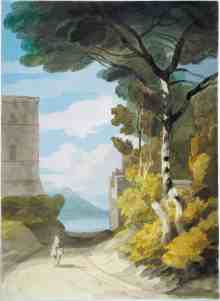
With natural watercolor paintings, you can achieve some fantastic techniques within Procreate. To make your watercolors look more natural, hard-edged imperfections and color variations will help you achieve those effects. The best way you can accomplish that is by utilizing a combination of brushes and realistic watercolor splotches.
This simple tutorial will show you how to create a watercolor bleeding technique while achieving a natural watercolor effect.
4. Realistic Watercolor Flowers
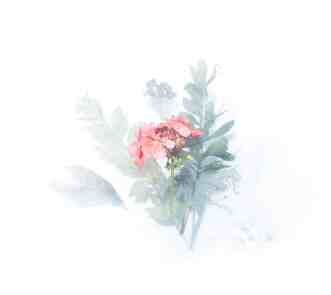
Creating realistic watercolor flowers is the way to go if you’re ready to explore another watercolor technique. By utilizing your best digital brushes, you can use several sweeping motions to achieve a realistic effect.
Additionally, you can incorporate some layering techniques with different washes so you can essentially blur into more isolated areas. To give you more detail, check out this tutorial that will allow you to create realistic watercolor flowers in Procreate.
5. Blending with Tropical Fruit
Painting fruit can be one of the easiest ways to add different watercolor techniques to your art. You can use bright and vibrant colors by adding layers and achieving a soft watercolor effect.
If you’d like to start with something simple, this watercolor tutorial will begin with a few dimensions. However, the artist will show you how to achieve different blending techniques and gradient textures.
Put It Into Practice
Now that you have a few techniques on hand, it’s time for you to put them into practice. Trying new watercolor techniques might be challenging at first. However, with enough repetition, you’ll be able to create some beautiful results with your digital art.
Which technique is your favorite so far?
As an Amazon Associate, Designerly may get commissions for purchases made through links in this post.
About The Author
Eleanor Hecks is the Editor-in-Chief of Designerly Magazine, an online publication dedicated to providing in-depth content from the design and marketing industries. When she's not designing or writing code, you can find her re-reading the Harry Potter series, burning calories at a local Zumba class, or hanging out with her dogs, Bear and Lucy.
